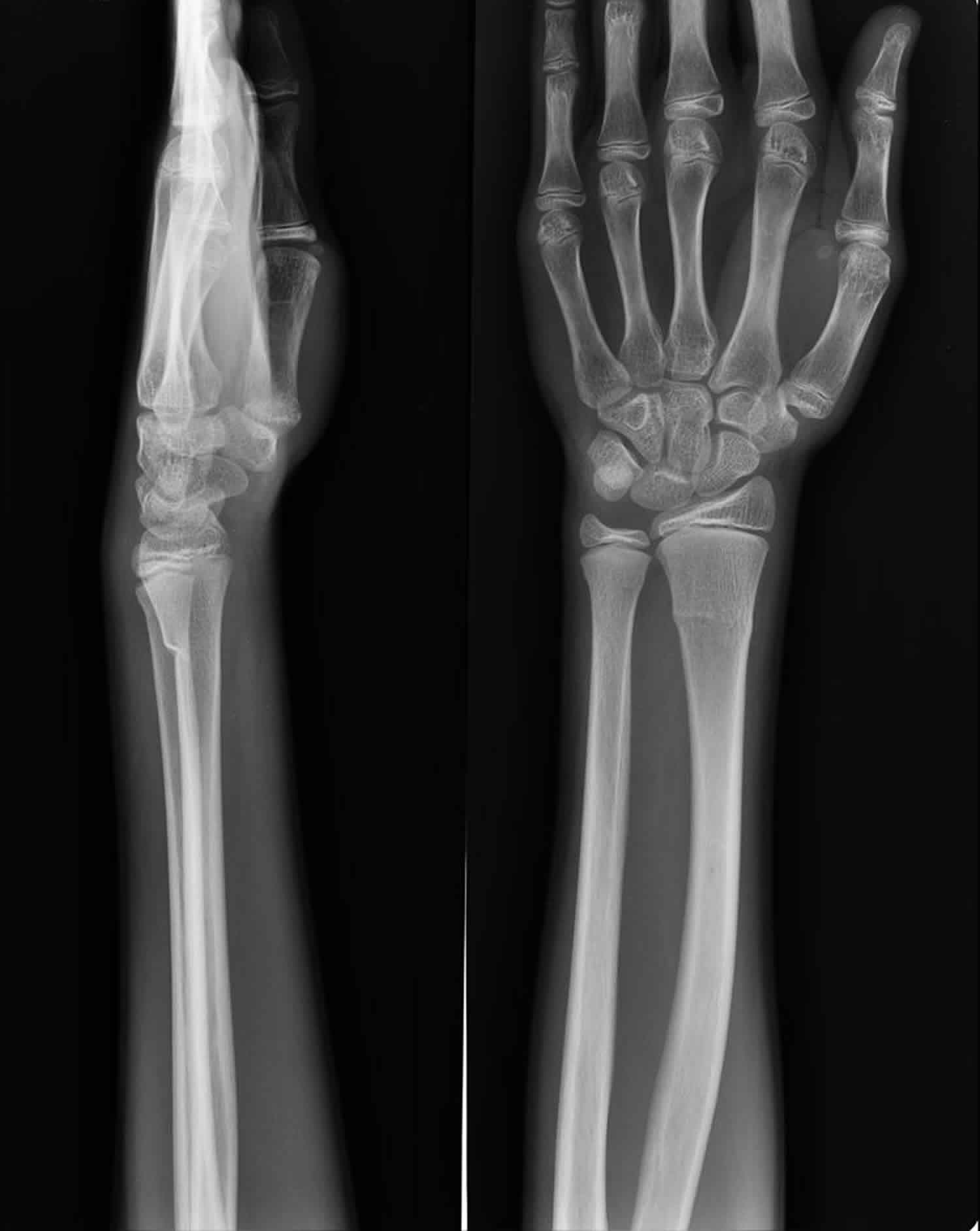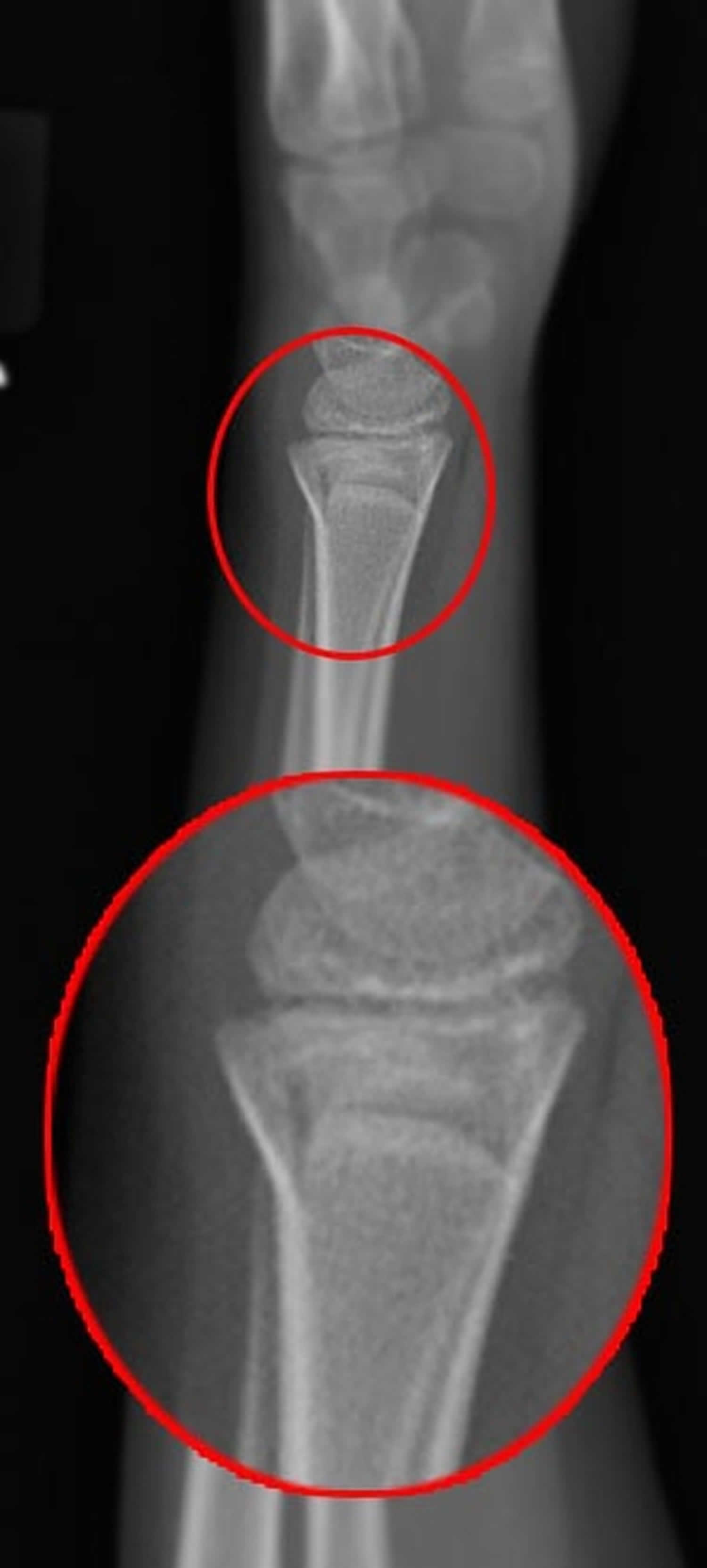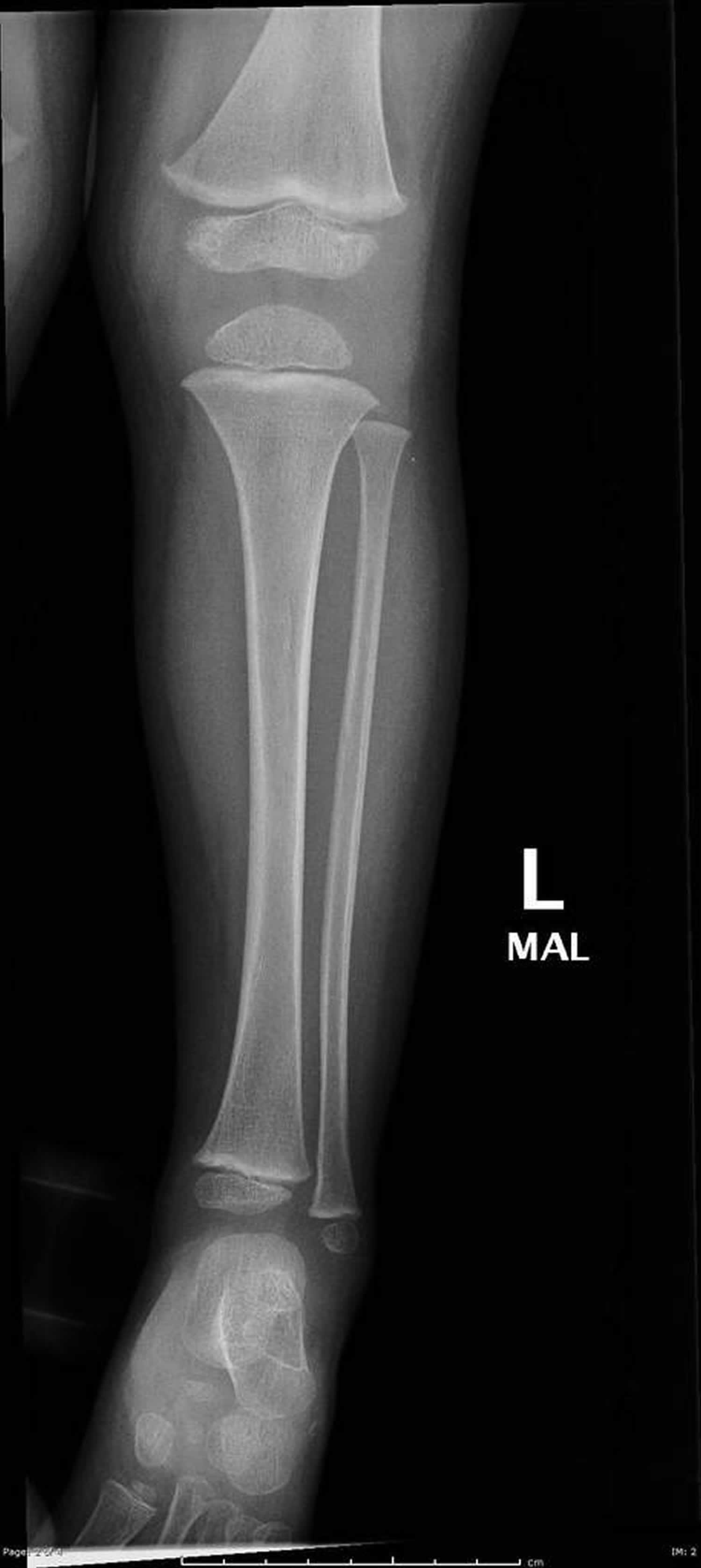What is a torus fracture
Torus fracture also known as buckle fracture, is incomplete fracture of the shaft of a long bone that is characterized by bulging of the cortex. Torus fracture results from trabecular compression due to an axial loading force along the long axis of the bone. Torus fracture is usually seen in children, frequently involving the distal radial metaphysis. Strictly speaking, a torus fracture refers to a circumferential buckle fracture 1. However, the terms are often used interchangeably.
Torus fractures or “buckle fractures” commonly occur following trauma in the distal long bones of children and young adolescents at the point of least resistance between the diaphysis and metaphysis of the developing bone as it buckles under the force of an increased axial load. Most frequently this occurs in the distal radius following a fall onto an outstretched arm 2, but can also commonly be seen in the tibia following traumatic injury.
Torus (buckle) fractures are stable due to the thick periosteum present in this patient population and, unlike other paediatric wrist and forearm fractures, the risk of future displacement is minimal 3.
Plain radiograph
- distinct fracture lines are not seen
- subtle deformity or buckle of the cortex may be evident
- in some cases, angulation is the only diagnostic clue
Figure 1. Torus fracture of radius
Figure 2. Torus fracture tibia
Footnote: 3 year old boy with ground level fall onto knee from walker 5 hours prior to presentation with refusal to bear weight following injury. X-ray shows buckling of the anterior tibial cortex, best seen on the lateral projection.
Torus fracture causes
Torus fractures are more common in children, especially aged 5-10 years, due to the elasticity of their bones.
Cortical buckle fractures occur when there is axial loading of a long bone. This most commonly occurs at the distal radius or tibia following a fall on an outstretched arm; the force is transmitted from carpus to the distal radius and the point of least resistance fractures, usually the dorsal cortex of the distal radius.
Torus fracture treatment
Torus fractures are self-limiting and typically do not require operative intervention, although a manipulation may be required if the angulation is severe. Sometimes a cast may be applied, but often a splint is all that is required with a period of rest and immobilization.
The traditional management of pediatric torus fractures of the distal forearm has mirrored that of other fractures in this region, including cast immobilization and serial radiographic and clinical follow-up to assess for displacement until fracture union 4. However, emerging literature over the last two decades has supported a ‘minimalist’ approach to managing these injuries. Van Bosse et al 5 described treatment with removable splint application at time of injury with a short (three to four week) period of immobilization and either self-discontinuation of the splint at home or a single follow-up appointment with clinical examination only. Radiographs become necessary only in the setting of re-injury or continued pain after the treatment period. Numerous other studies have highlighted safe and efficacious management of these injuries in a similarly ‘minimalist’ fashion 6.
References- B. J. Manaster, David A. May, David G. Disler. Musculoskeletal Imaging,The Requisites (Expert Consult – Online and Print), 4th ed (2013). ISBN: 9780323081771
- Forearm and distal radius fractures in children. Noonan KJ, Price CT. J Am Acad Orthop Surg. 1998 May-Jun; 6(3):146-56.
- Splinting versus casting of “torus” fractures to the distal radius in the paediatric patient presenting at the emergency department (ED): a literature review. Firmin F, Crouch R. Int Emerg Nurs. 2009 Jul; 17(3):173-8.
- Williams BA, Alvarado CA, Montoya-Williams DC, Matthias RC, Blakemore LC. Buckling down on torus fractures: has evolving evidence affected practice?. J Child Orthop. 2018;12(2):123–128. doi:10.1302/1863-2548.12.170122 https://www.ncbi.nlm.nih.gov/pmc/articles/PMC5902745
- van Bosse HJP, Patel RJ, Thacker M, Sala DA. Minimalistic approach to treating wrist torus fractures. J Pediatr Orthop 2005;25:495-500.
- Williams KG, Smith G, Luhmann SJ., et al. A randomized controlled trial of cast versus splint for distal radial buckle fracture: an evaluation of satisfaction, convenience, and preference. Pediatr Emerg Care 2013;29:555-559.







